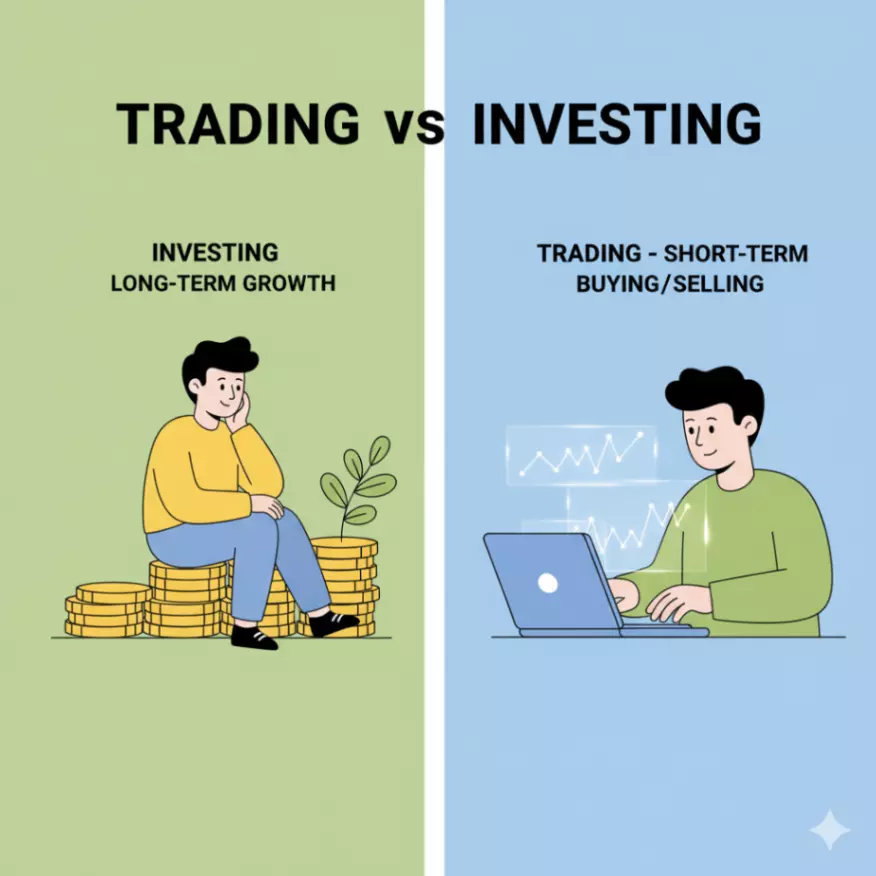Heard of Bitcoin or Dogecoin but have no idea where to start? You’re not alone. Plenty of newbies are interested in digital cash but get lost in the buzzwords, infinite YouTube tutorials and charts. If you’ve ever typed “how to learn cryptocurrency” into Google and ended up more confused than before, this guide is for you.
In this crypto roadmap for beginners, we’ll distill cryptocurrency explained in simple terms, walk you through the best way to learn cryptocurrency, and demonstrate how to build confidence in understanding and safely experimenting with crypto, step by step. Think of this as a “crypto for dummies” guide—clear, structured, and without unnecessary hype.

First Things First: What is Cryptocurrency? (Cryptocurrency Explained for Beginners)
Rather than being issued by banks or governments, it is powered by blockchain technology - a public digital ledger that transparently records every transaction.
Imagine you and your friends have a notebook where you record every time someone borrows or pays money back. No one can erase or cheat because everyone has a copy of the notebook. That’s essentially how a blockchain works—only it’s global and maintained by computers across the world.
Bitcoin (BTC): The first and most famous cryptocurrency, often called “digital gold.”
Ethereum (ETH) - more than money — apps, contracts and tokens run on its blockchain.
Unlike physical money, crypto lives online, and ownership is managed by cryptographic keys:
Public Key: Like your bank account number (safe to share).
Private Key: Like your ATM PIN (must stay secret).
That’s cryptocurrency explained in a nutshell—decentralized digital assets secured by blockchain.
Your 5-Step Roadmap: The Best Way to Learn Cryptocurrency
Learning crypto doesn’t need to be overwhelming. Here’s a step-by-step plan designed for absolute beginners.
Step 1: Master the Core Concepts (Learn Blockchain Technology)

Prior to hopping on trading apps or coins, it’s important learn blockchain technology - the backbone of crypto.
It is a chain of data blocks, each is linked to the one before it. Once information is entered, it can’t be altered - providing tamper-proof transparency.
Points to remember:
Wallet: Digital tool to store your crypto.
Public Key: Address for receiving funds.
Private Key: Your digital password (never share it).
Decentralization: No single company or government controls the system.
💡 Tip: Start small. Watch simple explainer videos or read beginner guides that describe blockchain with real-world analogies.
Step 2: Learn the Fundamentals (How to Learn About Bitcoin & Ethereum)

Once you’ve got blockchain basics down, it’s time to drill into the top currencies by market cap. Beginners often get lost in “shiny new coins,” but the safest way to learn is by studying the most established ones.
The Top 10 Cryptocurrencies by Market Cap usually include:
1. Bitcoin (BTC)
2. Ethereum (ETH)
3. Tether (USDT)
4. Binance Coin (BNB)
5. Solana (SOL)
6. XRP (XRP)
7. USD Coin (USDC)
8. Cardano (ADA)
9. Dogecoin (DOGE)
10. Toncoin (TON)
For beginners:
Start with Bitcoin: Often called digital gold, it’s mainly used as a store of value.
Explore Ethereum: Known for smart contracts and decentralized applications.
👉 Instead of chasing new coins, first learn about Bitcoin and Ethereum—the foundation of the crypto ecosystem.
Step 3: Identify trustworthy resources
The web is cluttered, but here are some great free crypto courses and resources to level-up your knowledge.
Some Of The Free Cryptocurrency Courses for Beginners
Coursera (Bitcoin and Cryptocurrency Technologies): University-level but beginner-friendly.
edX (Blockchain Fundamentals): Free to audit.
Binance Academy / Coinbase Learn: Bite-sized lessons from major platforms.
More Helpful Resources
Books: The Basics of Bitcoins and Blockchains by Antony Lewis.
YouTube Channels: Whiteboard Crypto, Coin Bureau.
Podcasts: “Unchained” by Laura Shin.
💡 Pro Tip: Pick one course and one book, instead of bouncing between endless blogs and TikTok videos.
Step 4: Learn Cryptocurrency Trading vs. Investing

One of the biggest beginner mistakes is confusing trading with investing.
Investing in crypto: Buying and holding for years, believing the asset will grow in value.
Trading crypto: Buying and selling frequently to profit from short-term price changes.
For beginners, the best way to learn cryptocurrency is by thinking like an investor first. Start slow, learn how markets move, and keep off the high-risk trading strategies until you demonstrate some discipline.
Step 5: Get Hands-On (Safely!)
Learning theory is good, but real understanding comes when you practice safely. You don’t need to invest thousands—start with low funds on a reputable exchange.
Best Cryptocurrency Trading Platforms for Beginners:
1. Coinbase – Beginner-friendly interface.
2. Binance – Huge selection of cryptocurrencies.
3. Kraken – Trusted and secure.
4. eToro – Copy-trading for beginners.
👉 Research the best platform for cryptocurrency trading in your country since availability varies. Always enable 2FA security before depositing any money.
Common Mistakes to Ignore While Getting Started with Crypto
Many beginners lose money not because crypto is “too risky,” but because they make preventable mistakes.
🚫 Avoid these pitfalls:
Falling for “get rich quick” schemes and scams.
Investing more than you can afford to lose.
Not taking back up and securing your private keys.
Making emotional decisions based on hype (FOMO).
Ignoring transaction fees and tax implications.
Conclusion
Learning cryptocurrency doesn’t need to feel overwhelming. By following this 5-step roadmap, you’ll:
Understand blockchain and wallets.
Learn the foundations with Bitcoin and Ethereum.
Availing benefits from free and well structured cryptocurrency courses.
Differentiate between trading and investing.
Get hands-on safely with reputable platforms.
Remember: Crypto is a marathon, not a sprint. You don’t need to master everything in a week. the concept is simple Start small, be consistent, and focus on learning first.
💬 What’s the one crypto concept you’re still struggling to understand? Drop it in the comments—we’d love to help!
Frequently Asked Questions (FAQ)
Q1: Can I learn cryptocurrency for free?
Yes! Many free resources (Coursera, Binance Academy, YouTube) provide beginner-friendly lessons without cost.
Q2: How long does it take to learn crypto?
It depends. Basics can be learned in weeks, but mastering trading or blockchain development can take months to years.
Q3: What are the important things to learn about cryptocurrency?
Begins with blockchain and bitcoin,—they are the foundation of the entire ecosystem.
DisclaimerThis article is for educational purposes only and should not be taken as financial advice. It is not recommending nor advertising any Cryptocurrencies to buy they are very volatile and carry's high risks. Always do your own research and do not not invest more than you can afford, consult with a licensed financial advisor before making investment decisions.




Comments (0)
Please log in to leave a comment.
No comments yet. Be the first to comment!